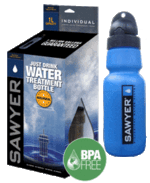- Messages
- 40
- Reactions
- 5
Have tried to find the answer to this but am only more confused. In a water shortage I plan on using the water in my pipes and water heater. Also have 2 water bags for the bathtubs that I will fill. This will last me for several weeks but will need to filter/treat it as it gets older. What would I need in the way of a water filter to make it safe to drink after several weeks? Any chemicals need to be added? Don't want to pay big dollars for a fancy filter if I don't need one.















